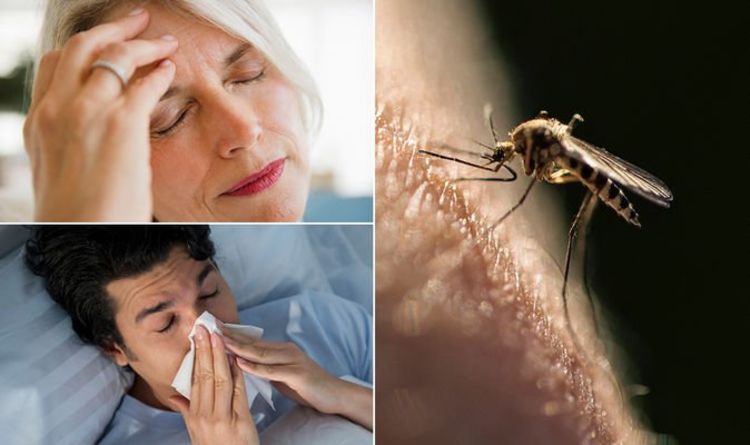Malaria remains one of the most widespread mosquito-borne diseases in the world, affecting millions of people each year. Despite global awareness campaigns, medical advancements, and public health initiatives, misconceptions about malaria continue to circulate. These myths can be dangerous, leading to poor prevention practices, delayed treatment, and unnecessary panic. To help separate fact from fiction, medical experts have clarified the most common myths surrounding malaria. Here are the top 10 myths debunked.
1. Myth: Malaria Spreads from Person to Person
One of the most persistent myths is that malaria can spread directly from one individual to another, similar to the flu. In reality, malaria is not contagious through coughing, sneezing, or casual contact. The disease is transmitted exclusively through the bite of infected female Anopheles mosquitoes. Understanding this helps reduce stigma around malaria patients, ensuring they get proper medical care without fear of isolation.
2. Myth: Only People Living in Rural Areas Get Malaria
While malaria is often more common in rural or forested regions, it is not limited to those areas. Urban areas with poor drainage, stagnant water, and a lack of mosquito control can also experience outbreaks. Medical experts emphasize that anyone living in or traveling to malaria-prone regions, whether rural or urban, is at risk if preventive measures are ignored.
3. Myth: Malaria Is No Longer a Major Health Concern
Many assume that malaria is a “disease of the past.” However, according to the World Health Organization, there are still over 200 million malaria cases annually worldwide, with significant deaths, particularly in children under five. This misconception can lead to complacency, reducing efforts in prevention, vaccination programs, and timely treatment.
4. Myth: Mosquito Bites at Any Time of the Day Cause Malaria
Not all mosquitoes transmit malaria, and those that do (Anopheles mosquitoes) usually bite between dusk and dawn. This means that using mosquito nets during sleep, applying repellents at night, and wearing protective clothing in the evening can significantly reduce infection risk. While bites at other times of the day can cause discomfort, they are less likely to spread malaria.
5. Myth: A Single Malaria Infection Provides Lifelong Immunity
Some people believe that once you contract malaria and recover, your body is immune forever. This is false. Partial immunity can develop after repeated exposure in high-risk regions, but it is not lifelong and does not guarantee full protection. People can contract malaria multiple times, which is why prevention and prompt treatment remain critical.
6. Myth: Malaria Can Be Treated with Home Remedies Alone
Traditional remedies like herbal teas, garlic, or ginger are sometimes believed to cure malaria. While some natural ingredients may support overall immunity or ease symptoms, they cannot replace proper medical treatment. Malaria requires antimalarial drugs prescribed by healthcare professionals. Delaying treatment in favor of home remedies can worsen the infection and increase the risk of complications.
7. Myth: All Fevers in Tropical Regions Are Malaria
Although malaria is common in tropical and subtropical areas, not every fever is caused by it. Dengue, typhoid, influenza, and other infections can present with similar symptoms. Assuming every fever is malaria may lead to self-medication and missed diagnosis of other serious illnesses. Experts recommend laboratory tests to confirm malaria before starting treatment.
8. Myth: Malaria Is Always Deadly
Malaria can be life-threatening if untreated, but with timely medical care, most patients make a full recovery. Modern antimalarial medicines are effective, and early diagnosis significantly reduces complications. Fatal cases usually occur when treatment is delayed, drugs are unavailable, or resistant malaria strains are present. Therefore, while malaria should never be underestimated, it is not always fatal when managed correctly.
9. Myth: Only Children and Pregnant Women Should Worry About Malaria
Children under five and pregnant women are indeed at higher risk of severe malaria, but adults and travelers are also vulnerable. Anyone without prior immunity, including tourists visiting malaria-prone areas, can develop severe complications. Medical experts stress that prevention measures are important for everyone, regardless of age or condition.
10. Myth: Sleeping Under a Mosquito Net Alone Is Enough Protection
While insecticide-treated mosquito nets are one of the most effective preventive tools, relying solely on them is not enough. A comprehensive malaria prevention strategy includes using repellents, eliminating stagnant water sources, wearing protective clothing, and taking prophylactic medication when traveling to high-risk areas. Combining these methods significantly reduces the chances of infection.
Get a Reliable Malaria Test at Abu Bakar Lab (ICT)
Conclusion
Malaria is surrounded by myths that can hinder prevention and treatment efforts. Believing false information puts individuals and communities at greater risk, especially in regions where the disease remains widespread. Medical experts emphasize the importance of accurate knowledge: malaria is preventable and treatable when proper steps are taken. By debunking these myths and spreading awareness, we can work toward reducing malaria cases worldwide and protecting vulnerable populations.




